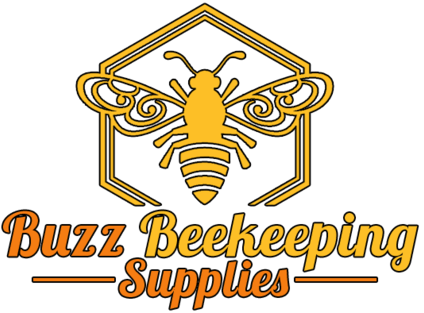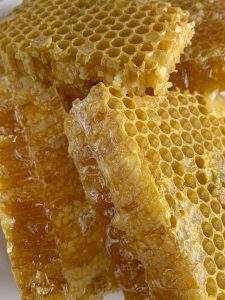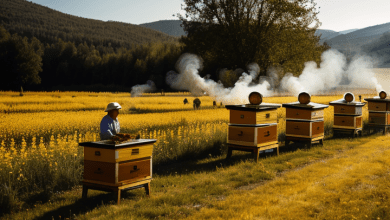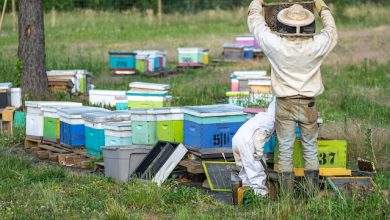Comb Honey : Advantages and Disadvantages of Comb Honey
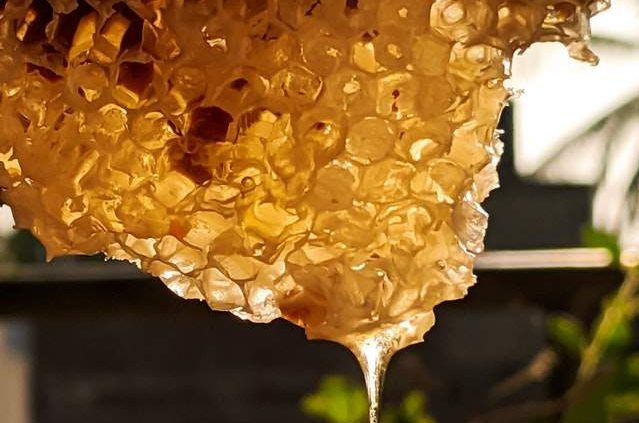
Comb honey have numerous advantages and also has disadvantages.
Advantages and Disadvantages of Comb Honey
Advantages
The advantages in the production of comb honey are numerous. As stated in the previous chapter, some of the delicate aroma of the finest grades of honey is lost in extracting, but this is retained to the full in comb honey. In the production of comb honey by the small beekeeper, less expensive equipment is necessary. The handling of the honey is a clean job and there is an attractiveness about the product that makes the handling of it a pleasure.
The wholesale price of comb-honey is higher than that of extracted honey, but the amount obtained from each colony is usually less, so that the return is about the same in either case. In a good honey flow the advantage is with the comb honey producer who uses proper methods of manipulation, while in light honey flows only the producer of extracted honey gets all the crop. The section is a convenient package for retail trade.
In this connection it should be noted that in comb honey production the beekeeper prepares the honey for the consumer while extracted honey is more often sold in wholesale packages. When extracted honey is blended and bottled it usually brings as high a retail price as comb-honey, but in this case the beekeeper does not do all the work and the bottler gets a good share of the profits. Comb honey meets with more ready sale in most markets than does extracted honey.
Disadvantages of comb honey
Comb honey ships poorly and consequently there is often considerable loss from breakage, on which account some wholesale honey dealers refuse to handle it. In colonies run for comb honey, swarming is a much more serious problem than in the larger hives with plenty of empty comb space used for extracted honey.
In light honey flows, bees work little or not at all in sections, for bees are induced to build comb and store honey in small sections with difficulty and there is often a loss before they begin work properly. A serious drawback is that if honey in the comb granulates it is almost a total loss, and usually the only way to save anything is to melt the wax and honey and market them separately.
The section of honey is a difficult package for the retail merchant to handle and the careless clerk may often spoil a section by running his thumb into it. For this reason and also for the sake of cleanliness, comb honey sections in sealed cartons appeal strongly to retailers and consumers.
 Restrictions in comb honey production
Restrictions in comb honey production
In view of the demands of the market and the tendency toward the production of only the best grades of comb honey, there are certain restrictions which should apply in its production. Where the honey is dark or where honeys from various sources are mixed in the combs by honey flows intermingling, extracted honey should be produced. Honeys which granulate quickly, although they may be of fine color, are undesirable for comb honey production.
The recent increase in the sale of alfalfa comb honey has caused many grocers to hesitate to buy any comb honey, for fear previous unpleasant experiences may be repeated and leave them with unsalable granulated comb honey on hand. Where the honey-flows are slow or intermittent, extracted-honey production will be found more profitable. These general restrictions will of course not apply in certain local market conditions. For example, there is demand for buckwheat comb honey in some limited regions, whereas on the general market it has no sale.
It is evident from a survey of the whole field that many beekeepers who now produce comb honey are doing it to their own detriment while an increase in the production of comb honey in the more northern clover sections would be beneficial to the honey markets. The limitations in comb honey production will possibly increase the price of the better grades of comb honey and make it profitable for some northern beekeepers again to produce comb honey.
The restrictions here enumerated obviously require that comb honey be produced by specialists, for the careless beekeeper and the man who can devote but little time to his bees cannot hope to produce the finer grades of comb honey, except by the accidents of exceptional honey flows.
Excerpted and edited from: Beekeeping; a discussion of the life of the honeybee … 1915. Phillips, Everett Franklin, 1878-1951.
Advantages and Disadvantages of Comb Honey
1. Ventilated Suit – https://amzn.to/2D1hJBu
(NEW) Ventilated Jacket – https://amzn.to/2Av6piJ
2. Beekeeper YKK Suit Combo – https://amzn.to/2Xk3xLz
3. Beekeeper Journal – https://bit.ly/3xXxFl2
4. YKK Suit – https://amzn.to/2IDJALO
5. Beekeeper Jacket – https://amzn.to/2FirwTW
6. Beekeeping Gloves:
– Goatskin Beekeeping Gloves – https://amzn.to/2GYxBZW
– Cow Leather Beekeeping Gloves – https://amzn.to/2uiSExd
7. Queen Marking Kit – https://amzn.to/2Wm1kCw
– Queen Marking Pens – https://amzn.to/3c4vE8y
–Queen Marking Cage – https://amzn.to/2TDwwdQ
